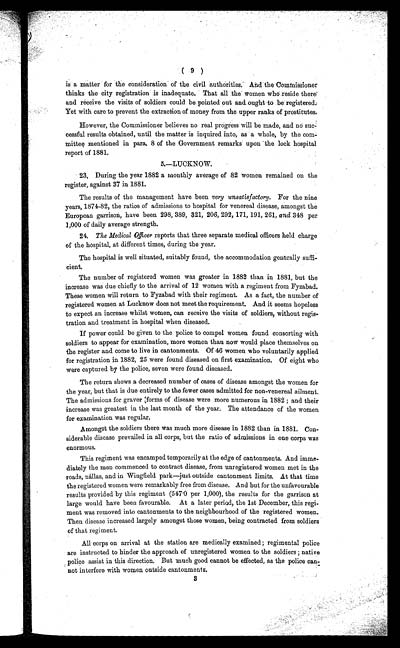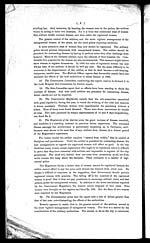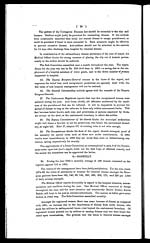Medicine - Institutions > Lock hospitals > Annual report on the working of the lock hospitals in the North-Western Provinces and Oudh > 1882
(319) Page 9
Download files
Individual page:
Thumbnail gallery: Grid view | List view

( 9 )
is a matter for the consideration of the civil authorities. And the Commissioner
thinks the city registration is inadequate. That all the women who reside there
and receive the visits of soldiers could be pointed out and ought to be registered
Yet with care to prevent the extraction of money from the upper ranks of prostitutes.
However, the Commissioner believes no real progress will be made, and no suc-
cessful results obtained, until the matter is inquired into, as a whole, by the com-
mittee mentioned in para. 8 of the Government remarks upon the lock hospital
report of 1881.
5.—LUCKNOW.
23. During the year 1882 a monthly average of 82 women remained on the
register, against 37 in 1881.
The results of the management have been very unsatisfactory. For the nine
years, 1874-82, the ratios of admissions to hospital for venereal disease, amongst the
European garrison, have been 298, 389, 321, 206, 292, 171, 191, 261, and 348 per
1,000 of daily average strength.
24. The Medical Officer reports that three separate medical officers held charge
of the hospital, at different times, during the year.
The hospital is well situated, suitably found, the accommodation generally suffi-
cient.
The number of registered women was greater in 1882 than in 1881, but the
increase was due chiefly to the arrival of 12 women with a regiment from Fyzabad.
These women will return to Fyzabad with their regiment. As a fact, the number of
registered women at Lucknow does not meet the requirement. And it seems hopeless
to expect an increase whilst women, can receive the visits of soldiers, without regis-
tration and treatment in hospital when diseased.
If power could be given to the police to compel women found consorting with
soldiers to appear for examination, more women than now would place themselves on
the register and come to live in cantonments. Of 46 women who voluntarily applied
for registration in 1882, 25 were found diseased on first examination. Of eight who
were captured by the police, seven were found diseased.
The return shows a decreased number of cases of disease amongst the women for
the year, but that is due entirely to the fewer cases admitted for non-venereal ailment.
The admissions for graver forms of disease were more numerous in 1882 ; and their
increase was greatest in the last month of the year. The attendance of the women
for examination was regular.
Amongst the soldiers there was much more disease in 1882 than in 1881. Con-
siderable disease prevailed in all corps, but the ratio of admissions in one corps was
enormous.
This regiment was encamped temporarily at the edge of cantonments. And imme-
diately the men commenced to contract disease, from unregistered women met in the
roads, nállas, and in Wingfield park—just outside cantonment limits. At that time
the registered women were remarkably free from disease. And but for the unfavourable
results provided by this regiment (547.0 per 1,000), the results for the garrison at
large would have been favourable. At a later period, the 1st December, this regi-
ment was removed into cantonments to the neighbourhood of the registered women.
Then disease increased largely amongst those women, being contracted from soldiers
of that regiment.
All corps on arrival at the station are medically examined ; regimental police
are instructed to hinder the approach of unregistered women to the soldiers ; native
police assist in this direction. But much good cannot be effected, as the police can-
not interfere with women outside cantonments.
3
Set display mode to: Large image | Zoom image | Transcription
Images and transcriptions on this page, including medium image downloads, may be used under the Creative Commons Attribution 4.0 International Licence unless otherwise stated. ![]()
| India Papers > Medicine - Institutions > Lock hospitals > Annual report on the working of the lock hospitals in the North-Western Provinces and Oudh > 1882 > (319) Page 9 |
|---|
| Permanent URL | https://digital.nls.uk/75111828 |
|---|




